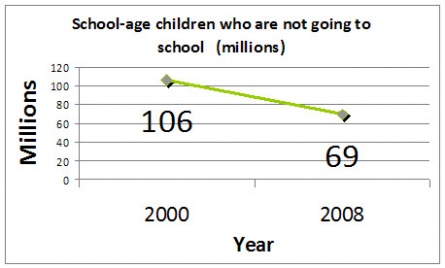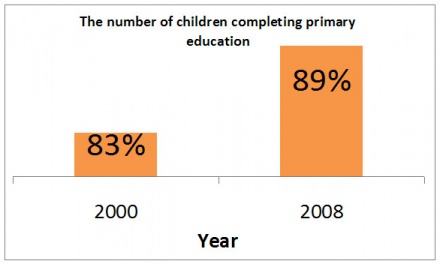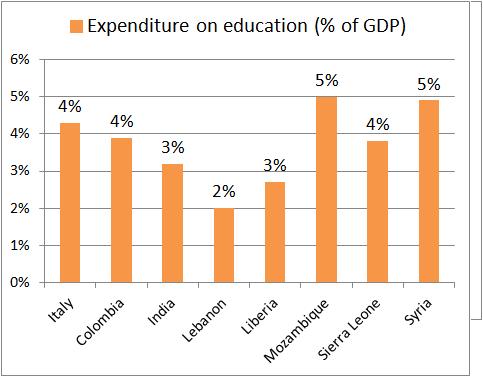The Millennium Development Goals and the International Development Agenda - TVP Manual - Section 1:Informing and Setting the Vision -
Millions of children lack access to school education.
The second goal is that all children obtain basic school education. The objective of the MDG 2 is that the right to learn is guaranteed to all children, boys and girls alike, rich and poor, in developed and developing nations alike.
Right now, this is not so. In Sub-Saharan Africa for instance, only 2 out of 3 children receive primary schooling. And it is especially the girls who get left out.
The current effort is to support African governments and civil society in following the example of the Asian and South American nations, that are successfully extending universal primary education to most of their children.
Graphs
MDG 2 - Targets
|
Target: Ensure that, by 2015, children everywhere, boys and girls alike, will be able to complete a full course of Primary education
|
Hard Facts
|
According to UNICEF, ensuring primary education for girls has a “multiplier effect.” in that educated girls are likely to marry later, have fewer children, who in turn will be more likely to survive, be better nourished and educated. Educated girls are also more productive at home and better paid in the workplace, and more able to participate in social, economic and political decision-making.
Episode 2 - MDG 2: Achieve universal primary education




